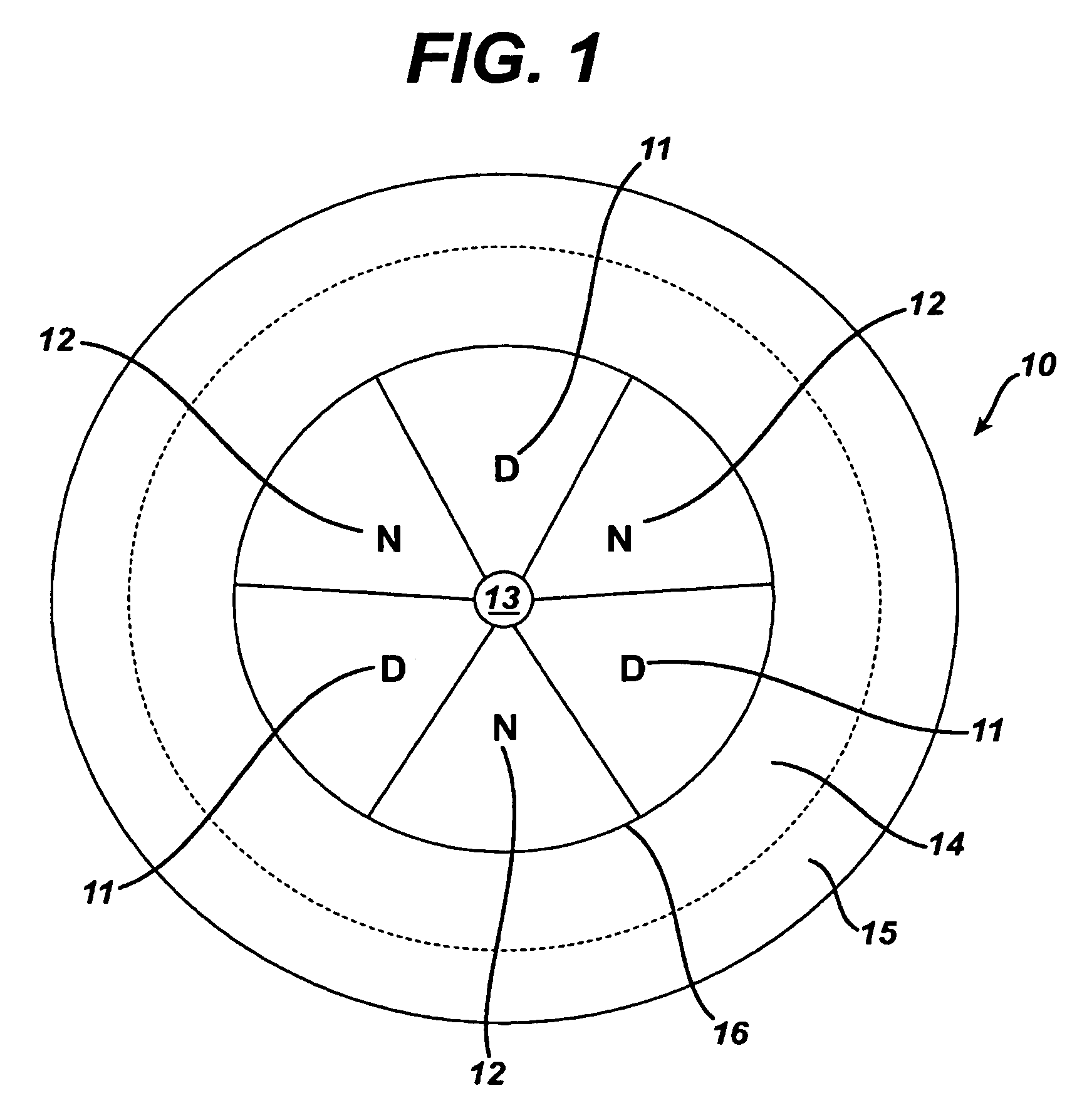Multifocal ophthalmic lenses
a multi-focal, ophthalmic technology, applied in the field of ophthalmic lenses, can solve the problems of reduced depth perception, inability to accommodate, or bend the natural lens,
- Summary
- Abstract
- Description
- Claims
- Application Information
AI Technical Summary
Benefits of technology
Problems solved by technology
Method used
Image
Examples
Embodiment Construction
[0008]The invention provides methods for correcting presbyopia, lenses for such correction, and methods for producing the lenses of the invention. Each of the lenses of the invention provide both distance and near vision correction. The lenses provide increased distance vision quality when compared to conventional multifocal lenses because the near vision portions of the lens have less of an effect on the distance vision than in conventional lenses. In the lenses of the invention, the near vision segments interfere at least about 50% less with distance vision than do the near vision segments in conventional lenses.
[0009]In one embodiment, the invention provides an ophthalmic lens for a lens wearer comprising, consisting essentially of, and consisting of an optic zone having alternating distance optical power segments and near optical power segments, wherein the near optical power segments are asymmetrical.
[0010]By “asymmetrical” is meant that given any first point that is on a near ...
PUM
 Login to View More
Login to View More Abstract
Description
Claims
Application Information
 Login to View More
Login to View More - R&D
- Intellectual Property
- Life Sciences
- Materials
- Tech Scout
- Unparalleled Data Quality
- Higher Quality Content
- 60% Fewer Hallucinations
Browse by: Latest US Patents, China's latest patents, Technical Efficacy Thesaurus, Application Domain, Technology Topic, Popular Technical Reports.
© 2025 PatSnap. All rights reserved.Legal|Privacy policy|Modern Slavery Act Transparency Statement|Sitemap|About US| Contact US: help@patsnap.com



